There are so many things to see and explore in Southeast Alaska that can only be accessed by a small boat. In 2008, my wife, Leni, and I wanted to make sure that our girls—Gracie, then three, and Isabel, then one—didn't miss out on those things for lack of a way to get to them. That’s when we decided to build SPARROW, a Caledonia Yawl, which we launched in 2009. None of us really were sailors back then, but, lucky for us, the Caledonia yawl is a very forgiving boat. The Caledonia yawl’s well mannered hull and simple lug rig made it easy for us to learn how to sail.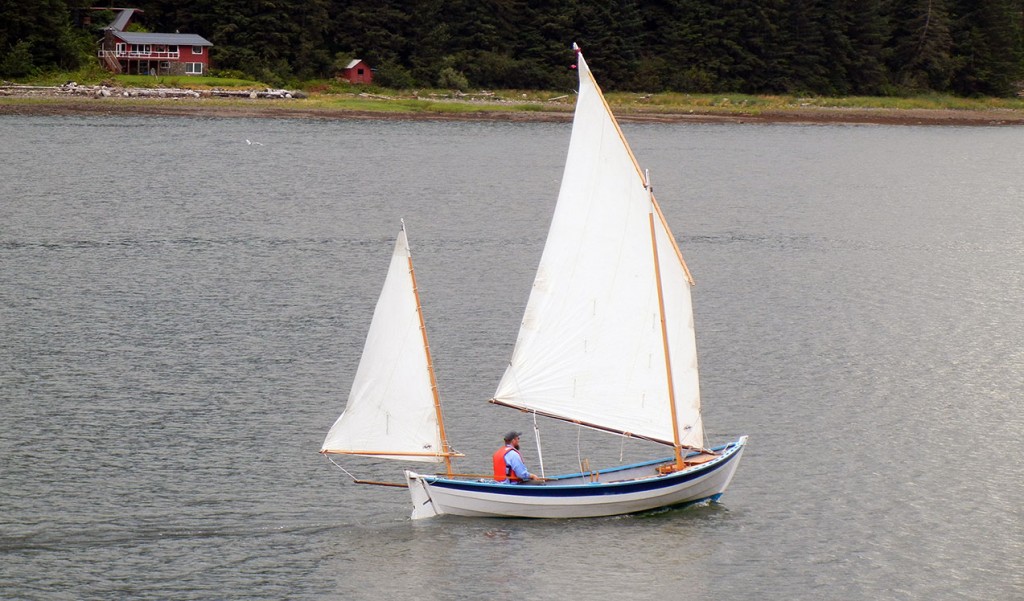 Leni Danner
Leni Danner
Join The Conversation
We welcome your comments about this article. To include a photo with your remarks, click Choose File below the Comment box.
Comments (12)
Comments are closed.

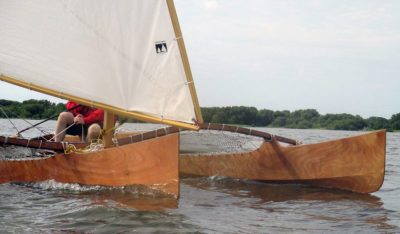
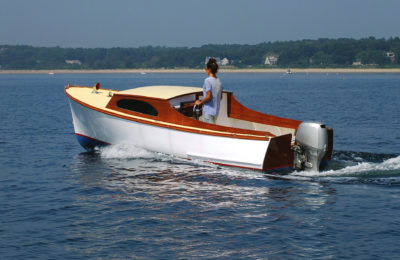
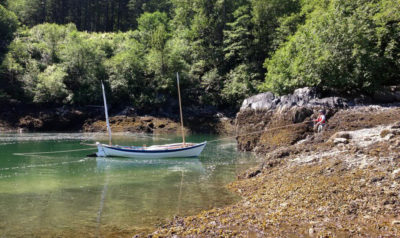

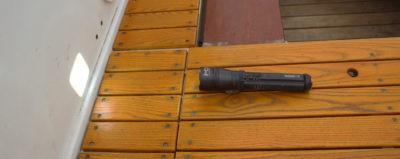
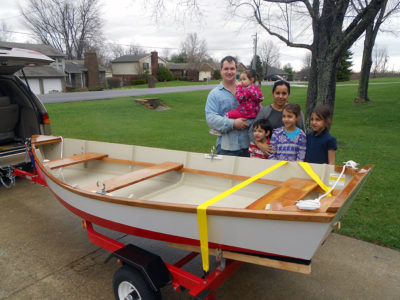
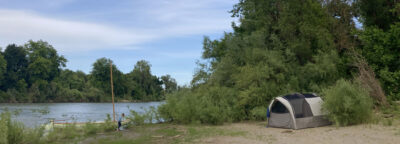
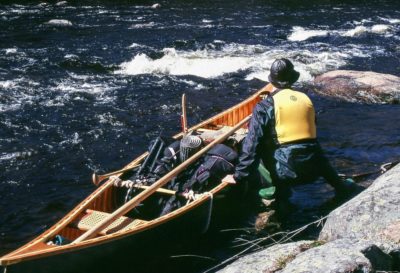
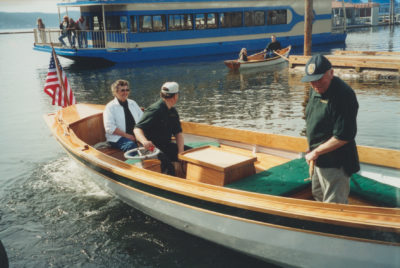
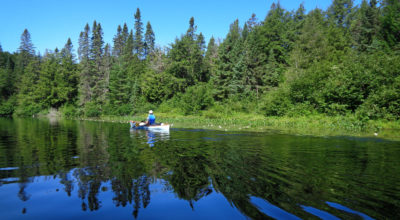
Good article! I am just getting started with my own Caledonia Yawl build so it was especially nice for me.
This was a very enjoyably story. I liked the photos, but it would have been great to see more detailed photos of the boat itself. In this particular instance having a short video to see how the boat handles would have useful as well.
I think that you are off to a good start with this new digital publication. Adding video and more embedded links would be great. I hope that you have some coverage of the Herreshoff 12 1/2 100th Anniversary races in Center Harbor in the next issue. It would nice to see at least one story on a vintage small boat like that in each issue.
Thank you,
-Dave
In our narratives you’ll get a glimpse of many interesting boats, but the details on construction, outfitting and performance are the subject of our boat profiles. In this issue the Crocker skiff and the Outrigger Junior get the close look you were hoping to find for the Caledonia yawl in Jim Danner’s article. Our companion print publication, Small Boats, now in its eighth year, has a wealth of boat reviews, but has yet to review the Caledonia yawl. That makes it a very good candidate for a review here in Small Boats Monthly. Stay tuned.
In the meantime you can find a three-part article on the construction of the Caledonia yawl in back issues 183 through 185 of WoodenBoat. There is also a review of the CY in WB 101. In the current Small Boats annual you’ll find a page by Jim Danner describing the tent he made for SPARROW. Back issues are available through the WoodenBoat Store.
Another good resource is the WoodenBoat Forum. Many threads there are devoted to the Caledonia yawl.
On a personal note, I built a CY a few years ago and modified the interior to suit my notions of cruising in comfort. There are photos and descriptions of my arrangement in the Small Boats annual for 2011. I built my CY with the same lug rig you see in Jim Danner’s story. It is quick to set up and very easy to sail. The generous sail area is great for light summer breezes and I reef that big main early if there’s more wind coming. I hope the resources I’ve listed will give you a clearer view of the Caledonia yawl. I encourage SBM readers to email me the boats they’d like to see profiled here.
Video clips are a natural for a digital publication and we’ll have them in future issues.
We weren’t able to attend the Herreshoff 12 1/2 race, but classic boats are certainly within our area of interest.
Thanks for your comments, Dave. Participation by readers is the key to making SBM a success.
Christopher Cunningham, Editor
Chris, Thank you for the thorough response and the additional links. It’s very much appreciated. Too bad you weren’t able to attend the Herreshoff 12 1/2 race as a couple of the guys from Woodenboat School’s waterfront won the races! Those a some beautiful boats.
Looking forward to the next digital issue of SBM.
Regards,
-Dave
I loved Jim’s article. He described the beauty of camp sailing well and motivated me to use my Norseboat more for the reason I obtained it. Can you share the source for the tent or did he make it himself? I am looking to extend my bimini to fill the gap to the cabin.
-J. Taylor, owner of wooden hull #1 Norseboat Cruiser
The tent Jim made for his Caledonia yawl is described in this year’s issue of Small Boats, available on newsstands and from the WoodenBoat Store. In the article “Making a Boat a Home: Six clever tents for camp cruising” WoodenBoat Senior Editor Tom Jackson takes a look at Jim’s tent and five others. In brief, the tent for the SPARROW uses aluminum tent poles for the framework and heavy-duty coated rip-stop nylon for the cover. He used plastic sheeting stretched over the poles to create the patterns for the fabric. You’ll find other approaches in Tom’s article with many details to help you get you started on your Norseboat project.
What a great story – very inspirational!
What an interesting article. I am planning to eventually build a CLC Northeaster Dory with which to explore some of Minnesota’s many lakes. This article has inspired me to hurry up and do so. Thanks
Jim, loved your story and photos. Alaska is so beautiful it would be overrun with people if the weather weren’t so bad.
+1 to the kids with pinwheels… Don’t need no stinkin’ electronic wind instruments!
Hi John,
I made Sparrow’s tent myself after looking at a few other examples I had seen on the internet. The tent really makes the kind of trips we take possible and really opens up the world of small boat cruising. As Chris mentioned, there us a write up in the most recent issue of Small Boats and there is also a thread on the Woodenboat Forum about putting the tent together. Good luck on your project.
Jim
A great article about open-boat cruising with kids and I really enjoyed it. One thing bothered me, although Jim made no mention of it in his equipment list – the absence of a firearm capable of offering protection from bears. From down here in Florida, we hear about bears on the beaches in Alaska as though they’re common as chipmunks.
I’m sure when he lands his family on the shore, Jim keeps a careful watch for any such encounters and I assume there’s really no worry when the family’s asleep on the hook. Is the threat of bears on the beach just journalistic hype (of which, as a retired newspaper writer and editor, I know about all too well), or are real precautions necessary?
Just curious. As a septuagenerian, I’ll not be sleeping on small boats in Alaska anyway!
Allan Horton
Sparrow’s gear list does not include firearms or other specific bear defense items. From my experience growing up in bear country, it is really just not necessary. The best defense against an unwanted bear encounter is a clean camp. We clean up immediately after cooking and keep unused food sealed up tight to reduce the likely hood of peaking a bear’s interest. As for feeling safe on the hook, bears are strong swimmers but I have yet to hear of one ever inviting themselves aboard an anchored boat.
But all that aside, in every bear encounter I’ve ever had the bear (or bears) have been just as interested in getting away as I was.
Jim